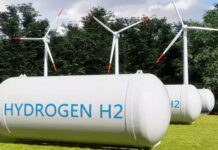In the next 3 years, solar will comprise the majority of the high-probability additions to utility-scale power generation capacity across the US.
The prediction is based on the information released by the Federal Energy Regulatory Commission (FERC). As far as the latest updates from FERC are concerned, there is a high probability of an influx from solar power between December 2022 and November 2025, with a total expected of 72809 MW.
There are no solar retirements that are expected during this period.
This growth will almost double the share of solar in total available installed generating capacity, from 778,880 MW to 151,690 MW. This excludes solar capacity distributed on a small scale.
Additionally, FERC expects that wind generating capacity will grow by 16,955 MW with only 140 MW of retirements. Besides this, the FERC is expecting the hydropower capacity to expand by 819 MW with retirements of 46 MW. There is also a high probability addition by natural gas of around 17,260 MW which will entirely offset 16,954 MW retirements.
There is also an anticipated surge of 2200 MW when it comes to nuclear capacity, which will be negated by 2323 MW retirements. There is no new coal capacity expected in the coming three years, but retirements are anticipated to the tune of 17,385 MW, with a net dip of 1677 MW in oil generation. Amongst high probability additions as well as retirements across all energy sources, a net increase in installed USS generating capacity of 71,391 MW is projected by the FERC.
New solar would comprise an overall net increase in the total capacity of the country, whereas new wind capacity should displace the decreases in fossil fuel as well as nuclear capacity.
If this data from FERC becomes a reality, then by November 2025, wind and solar will hold equivalent shares of US electricity generation of 11.41% and 12.02%, respectively.
The all-renewable combination which also includes biomass, geothermal as well as hydropower will comprise of nearly one-third of US generating capacity which is a growth from 27.19% today. It is also expected that natural gas is going to see a dip from 44.15 to 41.80%, whereas on the other hand coal will witness a fall to 15.10% from 17.34%. Besides this, nuclear will see a dip from 8.14% to 7.69%.
Apart from the high probability additions, the FERC also looks into all additions across every energy source that could be in the three-year pipeline. With 201,637 MW, solar dominates the sector, which is then followed by wind, which stands at 67,950 MW, whereas hydropower accounts for 12,400 MW. Natural gas is less as compared to all others with only 33, 547 MW. It is expected that if the current position exists or even accelerates, all renewables’ generation capacity might as well overtake natural gas by 2030 or even sooner for that matter.















































